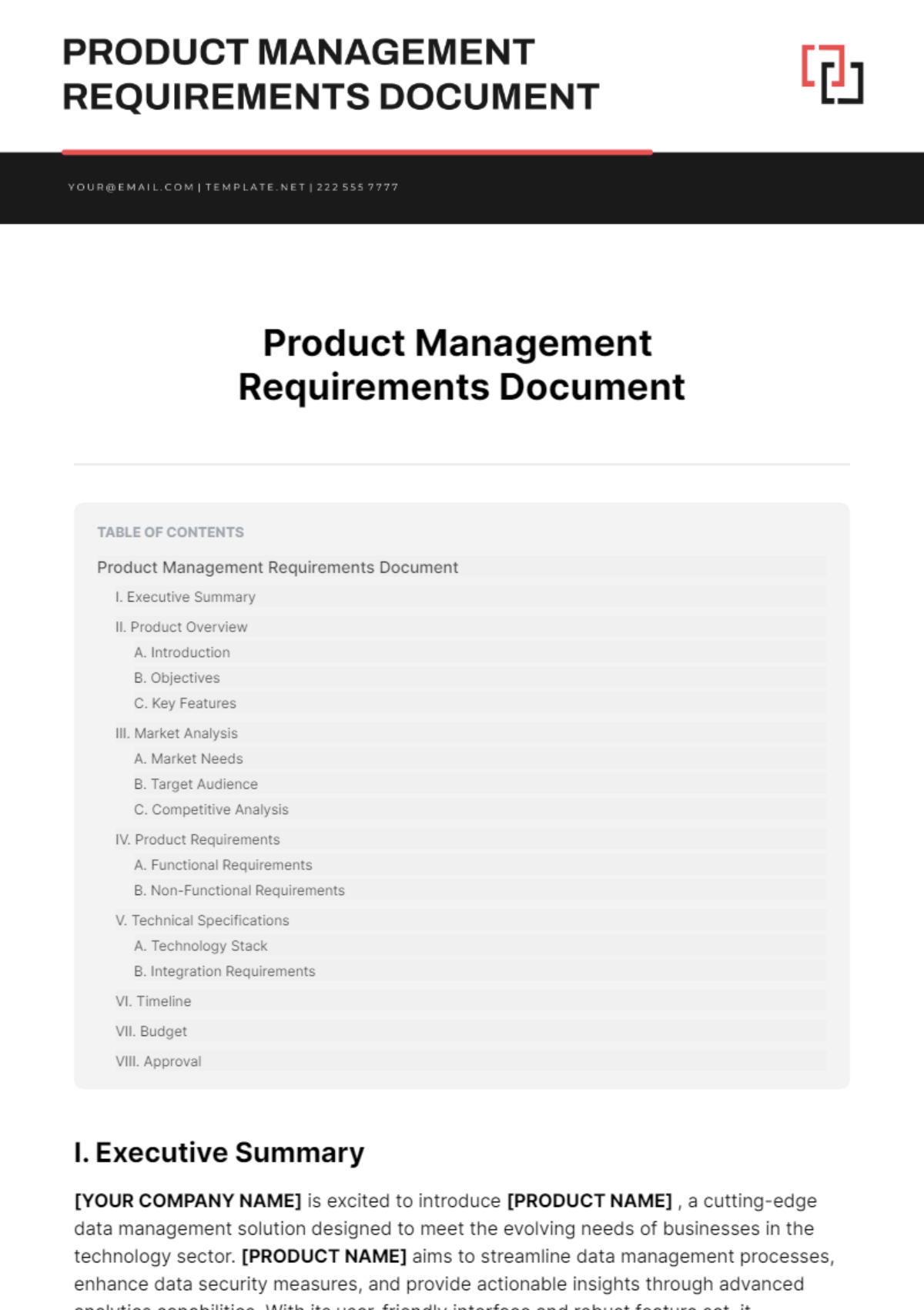Creating a solid product management requirements document is crucial for aligning teams and ensuring successful product development. It outlines the specific features, functionalities, and constraints that a product must meet to satisfy user needs. To help you create a comprehensive document, this article will provide a detailed guide and offer a free downloadable template.

Crafting a Comprehensive Product Management Requirements Document
A well-structured product management requirements document should include several key elements: Introduction, Scope, Vision and Objectives, Functional and Non-functional Requirements, and Glossary. In the Introduction, clearly define the purpose and intended audience of the document. In the Scope, establish the boundaries of the product, including what it will and will not cover.
The Vision and Objectives section outlines the high-level goals and aspirations for the product, while Functional and Non-functional Requirements specify the specific features, functionalities, performance, and quality attributes that the product must possess. Finally, the Glossary defines any technical or domain-specific terms used in the document.
Essential Considerations for Effective Requirements
Effective product management requirements should adhere to the SMART criteria: Specific, Measurable, Achievable, Relevant, and Time-bound. They should provide clear and unambiguous statements that can be verified and tested. Additionally, they should be attainable with the available resources and timeframe.
Requirements should also be relevant to the target audience and aligned with the overall project goals. They should be clearly prioritized, with essential requirements taking precedence over less critical ones. It’s important to continuously review and update the requirements document as the project evolves and feedback is gathered.
Involving stakeholders such as product managers, engineers, designers, and end-users throughout the requirements gathering process is crucial for capturing diverse perspectives and ensuring a shared understanding of the product’s purpose and functionality.
Conclusion
A well-crafted product management requirements document template is a valuable tool for organizing and communicating requirements effectively. It facilitates collaboration, reduces ambiguity, and provides a solid foundation for successful product development. By following the guidelines outlined in this article and using the provided template, you can create a comprehensive document that will help your team deliver a high-quality product that meets user expectations.
Remember to continuously review and update the requirements document as the project progresses, ensuring that it remains aligned with changing needs and feedback. By embracing a structured approach and engaging stakeholders throughout the process, you can create a requirements document that will serve as a roadmap for your product’s success.
